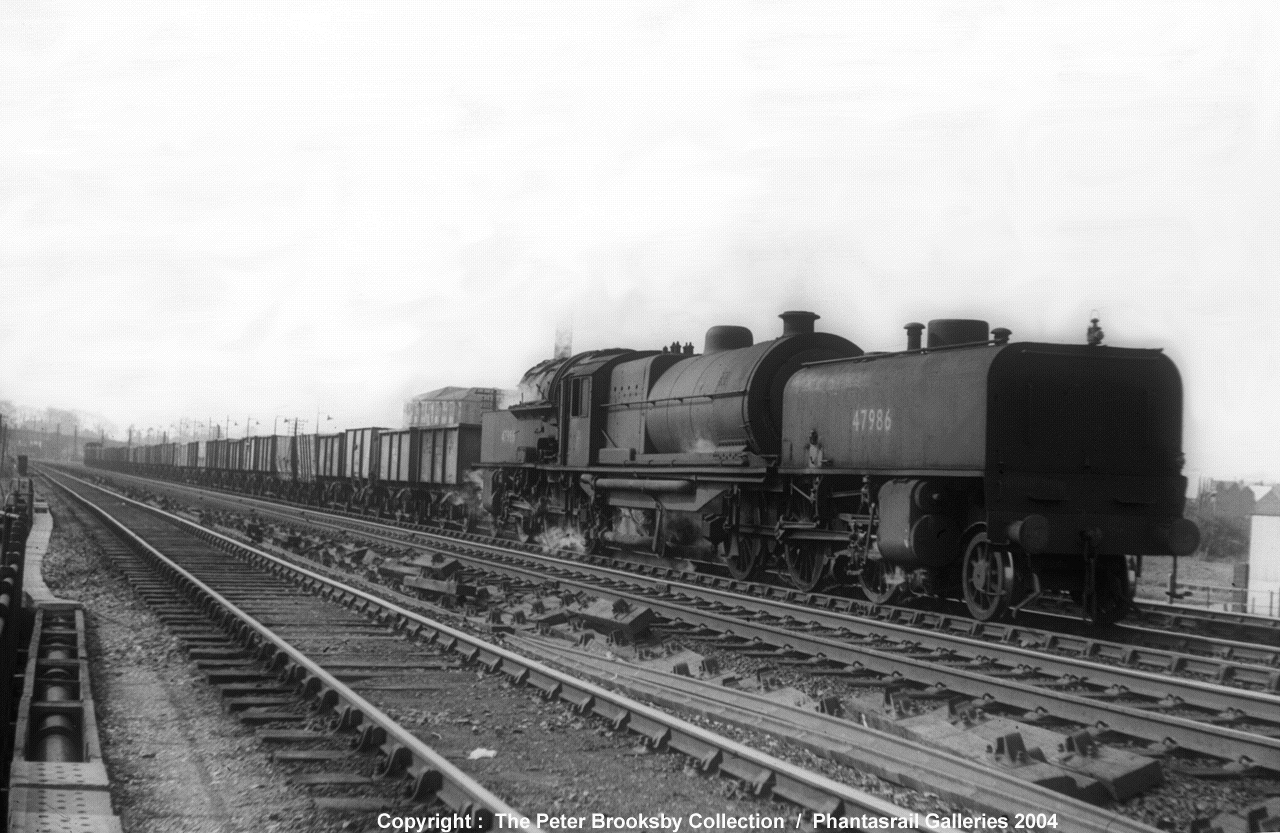I know most of you are expecting the next lot of garratts but I felt the need to deviate to a more serious subject.
Over the past year there has been an abnormal mumber of deadly collisions on our rail networks. All of them have been the fault of incoming vehicles either ignoring the level crossing and proceeding straight through, foolishly driving on the railroad tracks (this occured in a recent crash at Monarto here in SA, fortunately no one was killed) or not keeping a lookout for trains.
Last week the latest fatality occured in Victoria, involving a family returning from Easter holiday who did not see the train coming and did not stop. Immediately there has been calls for flashing lights and full crossing gear to be fitted to every level crossing in Victoria, regardless of isolation. Not only is this expensive, it would be in many areas a waste of time given that in some places trains may only run once or twice every couple of weeks. The Victorian transport minister has called for councils to close areas of road crossing such zones. This is impractial- the roads must surely be used by some people- and will the government fork out extra cash to build replacemtns? Unlikely.
What is needed tis the tightening of laws concerning unguarded level crossings- even though this is common sense, ALWAYS stop the car, look both ways- if there is a train coming AT ANY DISTANCE do not proceed- one remebers a bus getting stuck in the tracks at Salisbury Station and the resulting collision killing several schoolchildren and injuring others.
As long as drivers believe that they can ignore the signs and foolishly zip through level crossings in the country there will continually be accidents.
Friday, March 28, 2008
Intermission- Fatal Crashes
Posted by Klink at Friday, March 28, 2008 0 comments
Saturday, March 15, 2008
The Mighty Garratts part 2: Aussie Edition-section 1
After the disapointing results achieved by the flawed british Garratts, some viewers may approach the Australian types with caution. The truth could not be further, in a remarkable twist, the articulated beasts were among the finest steam locomotives to operate in our borders, and indeed, rank among the greatest in the Garratt class when viewed on a global scale. (It is another example of how different Australia is compared to britain as an environment for trains to operate in. There is no 'given gurantee' with any type- be it conventional or unusual- that means it will operate well anywhere since each line and environment is different. An example of a design that, the reverse from the garratts, did well in Britain but was a disaster in Australia is the Fairlie, of which I will comment further in a later issue)
The first state I will cover is South Australia. SA needed no broad or standard gauge garratts, mainly thanks to the 'big-engine' policy of Commissioner Webb. However, the freight locomotives on the narrow gauge line between Broken hill and Port Pirie (T-class 4-8-0s from 1909) were being decimated by the heavy and long ore trains. An order was placed with Beyer Peacock for 10 oil fired narrow gauge garratts. Unusually, the order was subcontracted on to a french company, Societe Franco Belge de Materiel de Chemins de fer. This resulted in a dsign with more of a french-belgian influence on the appearance, particularily regarding the nameplate and buffer design.
The imported garratts arrived in 1953 and displaced the disliked '300 class Australian Standard Garratts' bought as a stop gap from WA. The new type was a versatile and reliable design, often working express passenger trains in addition to the heavy ore loads.
Above: The South Australian Railways 400 class Beyer-Garratt
The types were finally displaced by the new diesel electrics in the late sixties and by january 1970 all had been withdrawn. Fourtunately, two survive, both unfourtunately as static exhibits.
Victoria, like South Australia, had just one indigenous Garratt type: the G Class narrow gauge garratt. These two locomotives were used on the lines out of Moe and Colac, replacing the Na Class tank engines which were under serious strain from double heading and increased loads. Like the other AUstralian Garratts, they were constructed at Beyer Peacock and began service in 1926.
The two garratts proved their worth over their predecessors with significant savings in fuel and water, and the elimination of double heading.The narrow gauge lines they worked on, however, closed in 1954 (Moe) and 1962(Colac). The first locomotive, number G41 was scrapped, but the second, G42, is in full working order on the Puffing Billy Railway.
G42 in working order on the Puffing Billy Railway.
Because of the difficulty in getting afew of the details of the other garratts (most especially WAGR garratts) I will have to split this article up and post the third part once its done.
Posted by Klink at Saturday, March 15, 2008 0 comments
Saturday, March 1, 2008
The Mighty Garratts Part One: British Edition
The powerful Garratt style locomotive, basically two engines in one (not too disimlar to the Farilie arrangement) has been a valuable addition to many locomotive fleets of several countries. Many African nations (for example Rhodesia and South Africa) depended on the use of these designs well into the 1980s and '90s. Their ability to work well on tightly curving tracks and being able to haul very heavy trains over long distances and changing gradients has allowed the type to spread all over the globe, from Tanzania to Tasmania. Beyer Peacock (the company that never built an ugly locomotive) was the first to build a Garratt locomotive: the K1 for the North-East Dundas Tramway in Tasmania. This locomotive happily survives today in full working order on the Welsh Higland Railways.
Surprisngly, britain itself had used only two main-line standard gauge garratts: the LMS' 33 Beyer-Garratts, and the LNER's U1, designed by Sir Nigel Gresley and the most powerful steam locomotive ever to run in Britain.

Top: the LMS Beyer Garratt in service and right: the LNER's powerful U1 in its official works portrait.
Both of these designs were plagued by two facts: one, that they were difficult to fire due to the lack of automatic coal pushers, and also, Britain's railways really were unsuitable grounds for them. Garratts are best deployed in difficult terrain or with exceptionally heavy loads, which makes them economically viable. There were certainly heavy loads, but the problame is they didn't materialse often enough- and to make matters worse, sidings and crossing loops for the extended trains were far too small. This is similar to what had occured with Nigel Gresley's excellent P1 design: it worked superbly, but the huge loads it was supposed to pull were rare.
The U1 was actually designed to bank coal trains over the steep Worsborough Bank on the famous Woodhead Route in its pre-electric days (reasons for it being known as the 'Wath Banker'). In its life it was converted to an oil burner with limited sucess, and was tried out on the Lickey Incline as a replacement for the legendary 'Big Bertha', however it was mostly unsuccessful. It was withdrawn and scrapped in 1955. Crews disliked the locomotive because of the massive amount of coal shoveling involved to keep it running, coupled with hellish breathing conditions created by the smoke it relased when banking in the Silkstone Tunnels. The garratt's crews were notorious for failing it for the slightest reason if it meant they wouldn't have to use the locomotive that day. Among other problems, it also suffered from excessive boiler corrosion due to the very soft water it was fueled with.
As for the 33 beyer-Garratts on the LMS, they suffered from a critical defect: they were designed according to the Midland's 'Small engines' policy- and had only standard axle boxes which suffered from critical overheating. Their coal consumption was terrible and like the LNER's U1 they were maintenance nightmares.
One good point about the LMS design was its revolving coal bunker on the later engines which made the fireman's lot much easier. However, there was still no automatic coal pusher.
So, the verdict for the two sole garratt designs to operationally serve in Britain? Both were flawed, and were in some ways uneccesary- the design was meant for curved and diffcult terrain with plenty of siding room for accomodating long trains- not what they operated on. Also, despite their power, the type should have been selected for use only with the heaviest and longest trains to make them economically viable. As it was, these trains were realitely few in those days (a problem shown, as mentioned, with the otherwise excellent P1 mikado of the LNER). However, for banking purposes, the design was also flawed. Such needs could have been met by a more conventional locomotive: for example in the style of the classic 0-10-0 'Big Bertha' wich was perfect for use on the sharp Lickey Incline.
Certainly, though, both designs did at least give the two operating companies some serious pulling might. the U1, as mentioned, gave its designer yet another record to add to his book: the most powerful British steam engine ever. The LMS design might well have been better had it not been for the restrictive loading gauge and the faulty axle boxes.
Despite the Garratt design's failure to become entrenched in British Steam annals, it acheived great success on another continent where there was the space, heavy train loads and terrain that meant the type could achieve success. In the next part, I will talk about, of course, the Australian Garratts and their excellent, far more lasting service.
Posted by Klink at Saturday, March 01, 2008 4 comments



